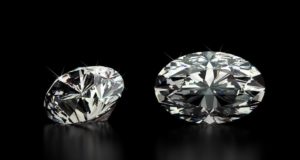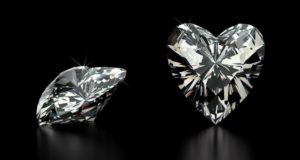
You purchase a beautiful emerald for your mineral collection but forgot to maintain it properly. One year later, you find it in your drawer with much of its luster lost. Why? In our recent blog, we discussed guidelines for investing in gemstones. Now, let’s take a look at how to care for your investment. You need to be aware of the dos and don’ts regarding the maintenance of gems. One wrong move and they can lose their shine (and value) for life.
Gem Maintenance Overview
In addition to a mineral’s rarity and alluring beauty, they are prized for their durability. In fact, their natural toughness is one of the main reasons why gemstone collections have become such a popular mode of investment today. However, you would be wrong to think that given their literal rock-strong build, these ornate stones don’t require any maintenance.
Whether you plan to sell them down the line or not, it’s essential to know how to care for them. Improper storage and negligence in cleaning these minerals regularly or with the wrong substance are rookie mistakes many gem collectors make. This can have an adverse effect on the beauty and brilliance of these stones. This, in turn, can greatly reduce their total worth and hence, any potential profits you can make by selling them.
Here are some important tips on how to look after your gemstones and maintain their exquisite beauty.
Cleaning Your Gems

It doesn’t matter whether they are tucked away safely in a box or displayed openly on your shelf. Gemstones need to be cleaned periodically. Cleaning is quite easy and should only take a couple of minutes.
Generally, all you need to do is rinse them with lukewarm water. This washes off the dirt and dust that may have settled on the surface. In some cases, you might need to add a bit of soap or other mild detergent to remove hard stains.
If you have just mined a piece from a public gemstone dig site, you will need to clean it more thoroughly to get rid of all the soil and grime.
Depending on the size and texture of the stone, a small cleaning brush with soft or medium-hard bristles would suffice. Most of the time, a toothbrush or paintbrush works well, so grab one and gently scrub.
Clean it in a slow, circular motion. Avoid scrubbing too harshly as it can scratch the stone.
For very small-sized gems that are hard to clean with a brush, dip them in a bowl of soapy water. Then rub each piece gently between the tips of your fingers to remove the dirt stuck to it.
Once clean, immediately dry the stones using a soft, lint-free cloth.
Pro tip: Never wash your gemstones directly in the sink as you risk losing them easily.
Cleaning Specific Gemstones

The above method of cleaning is generally safe for most rock minerals and crystals such as emerald, jade, granite, amethyst, corundum and others that are similar in chemical composition.
However, you should try to research about the nature of each gem in your collection. This is because some of these tend to be of quite a sensitive nature. Cleaning your minerals too frequently or with water that isn’t at the right temperature can dull their luster permanently.
For example, turquoise and amber have a relatively lower resistance than most gemstones. Using detergents or warm water to clean them can result in a change in color due to chemical reactions.
Here are some important considerations for some of the common minerals that require extra care to handle:
- Peridot – Peridot is quite soft compared to an average gemstone. Avoid putting too much stress otherwise it may crack.
- Turquoise – Store it in an airtight box or plastic bag as moisture from the air can stain its surface over time
- Garnet – Garnet is heat sensitive so avoid prolonged exposure to warm water
- Pearls – Wash them with plain lukewarm water. Dipping them into chemical solutions can discolor the outer layer
- Aquamarine – Keep in a soft pure cotton cloth after cleaning as aquamarine is prone to scratches.
- Opal – Do not wash it with warm water as it is extremely sensitive to heat. Wrap in a soft fabric before storing it.
- Sapphire – Keep it away from stones like diamond and ruby as their hard edges can scrape its soft surface
- Diamonds – Being the hardest of all gemstones, they bear heat and pressure well. Mechanical cleaning is often the go-to method for restoring their shine. However, always hand clean it properly first to avoid scratching during the mechanical cleaning process.
Using an Ultrasonic Cleaner
Some expert level gem collectors like to use special equipment such as ultrasonic cleaners. These home kits are basically made for cleaning crystal and stone-embedded jewelry. Most of them have a steam and boiling system to take your gems from dull to dazzling in no time.
It is quite an efficient and effective way to maintain a large assortment of gemstones in prime condition. But it is usually not recommended for beginners.
The heat and concentrated chemical solutions used in these cleaners can damage your stones if there is a slight oversight on your part. Plus, it is not suitable for all types of stones. If you want to use such advanced methods to restore the shine, it’s better to leave it to the professionals.
Take your collection to a jeweler and they can clean it for you.
How to Store Gemstones

When it comes to storing your gemstones, just remember this one cardinal rule: keep them away from heat and sunlight at all costs.
Heat and light, especially ultraviolet rays in sunlight can have an adverse effect on the color and durability of these minerals.
Stones like amethyst and quartz can become dull and tarnished if kept under direct sunlight. Storing your gems in a high temperature environment can also dry up their natural moisture.
Microscopic water droplets play an integral role in holding the structure of mineral rocks together. Reduced water content can cause a fracture in these stones.
Also, remember to always wash your hands thoroughly before touching any gemstones. Chemicals from hand moisturizers, perfumes or even the natural salts and other compounds in our sweat can be damaging for their natural glitz.
End Note
Building a gemstone collection is fun and exciting. But you must remember that although mineral rocks have high resistance, they are not indestructible altogether. To maintain their beauty, you need to store them properly and clean them periodically.
Follow these tips on how to care for gemstones and rest assured they will retain their shine and luster for years to come.


























 Why Gemstones are Treated
Why Gemstones are Treated
